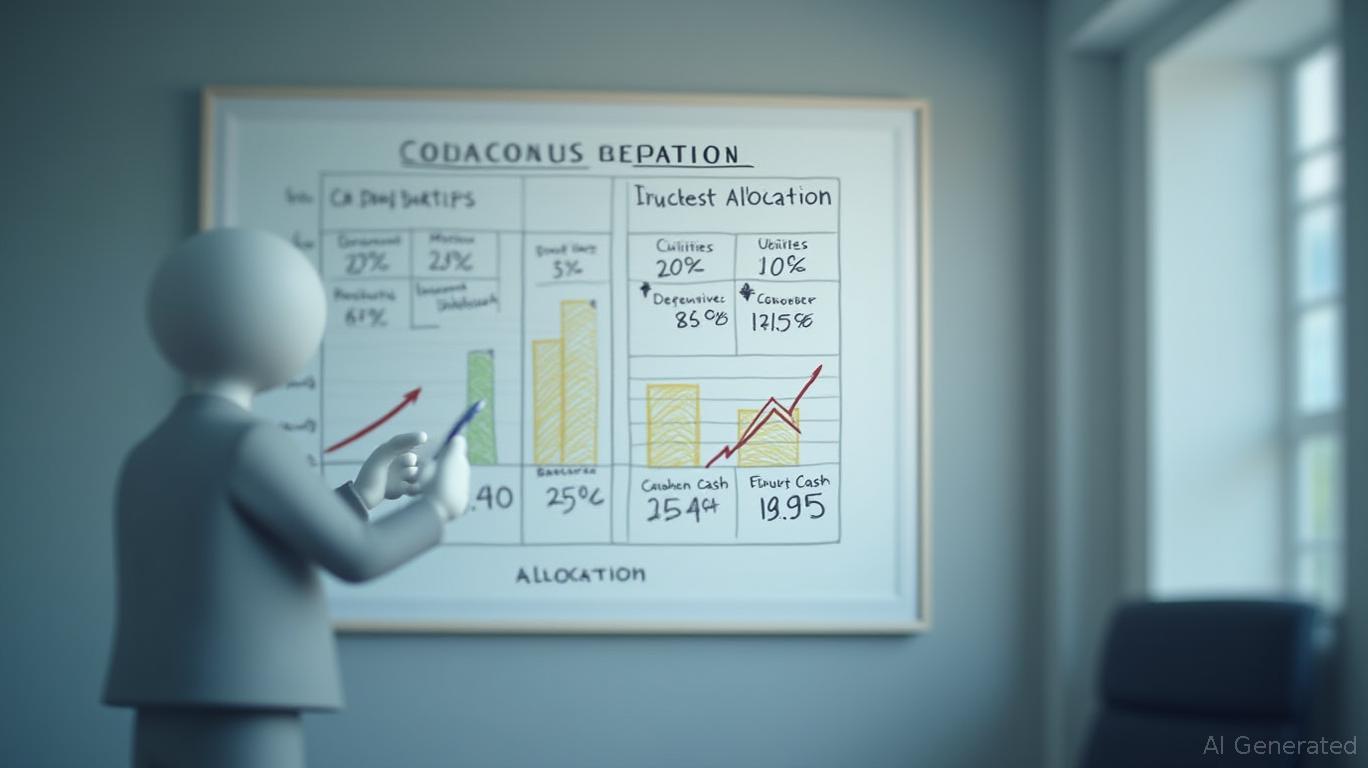Decoding the U.S. 4-Week Bill Yield: Sector Rotation Strategies in a High-Rate Environment

The U.S. 4-Week Treasury Bill Auction Yield has emerged as a critical barometer for short-term monetary policy and sector rotation strategies. As of July 2025, the yield stands at 4.31%, reflecting a 0.13 percentage point increase over the past month but remaining 1.03 percentage points below its January 2024 peak of 6.13%. Analysts project a decline to 4.12% by 2026, signaling a gradual easing of rate pressures. However, the current elevated yield environment—pinned by geopolitical tensions, corporate liquidity demands, and lingering inflationary concerns—has created stark divergences in sector performance. For investors, understanding how these yield movements interact with industry-specific sensitivities is key to navigating the next phase of the rate cycle.
Monetary Policy Signals: A Tightening Legacy
The 4-Week Bill yield, while short-term, acts as a leading indicator of broader rate expectations. Its recent rise to 4.235% underscores a market pricing in a higher "neutral rate" than previously anticipated, even as the Federal Reserve pauses hikes. This dynamic reflects investor skepticism about the Fed's ability to tolerate inflation at 3.8% without further tightening. For sectors sensitive to borrowing costs and liquidity conditions, the implications are clear: a prolonged high-rate environment will continue to weigh on some industries while creating tailwinds for others.
Sector-Specific Impacts: Winners and Losers in a High-Yield World
1. Consumer Durables: Squeezed by Rising Costs
The Consumer Durables sector, which includes automakers and home goods retailers, has been one of the most vulnerable to rising short-term rates. When the 4-Week Bill yield exceeds 4.0%, historical backtests show a consistent underperformance in the sector. For example, in 2023–2024, the Consumer Discretionary sector (a proxy for Consumer Durables) lagged by an average of 1.2% monthly when yields were above 4.0%, compared to 1.8% gains when yields were lower.
This sensitivity stems from two factors:
- Higher borrowing costs for consumers, which dampen demand for big-ticket items like cars and appliances.
- Corporate margin compression as companies with high debt loads (e.g.,
Investors are advised to underweight Consumer Durables until yields retreat below 4.0%. The sector's recovery hinges on a meaningful easing of rate expectations and a rebound in consumer confidence.
2. Capital Markets: Benefiting from Rate Rigidity
In contrast, the Capital Markets sector—encompassing banks and trading firms—has thrived in the current high-yield environment. When 4-Week Bill yields exceed 4.0%, the S&P 500 Financials (XLF) historically outperforms, averaging 0.74% monthly returns in such periods. The recent 4.235% yield has amplified this trend, as banks capitalize on wider interest rate spreads and increased trading volumes.
Geopolitical tensions and a "flight to safety" into short-term Treasuries have further boosted liquidity conditions for
. and , for instance, have seen increased demand for fixed-income products and derivative contracts. However, this strength is contingent on the persistence of high rates. If yields begin to decline meaningfully, the sector's outperformance could reverse.3. Utilities: A Mixed Bag of Rate Sensitivity
The Utilities sector, traditionally sensitive to long-term bond yields, has shown a nuanced response to short-term rate changes. While the sector's historical high correlation with long-term rates has weakened (partly due to AI-driven electricity demand and defensive positioning), it remains vulnerable to rising short-term borrowing costs.
The September 2024 rate cut initially provided a modest tailwind, but the S&P 500 Utilities sub-index closed down 0.5% on the day of the announcement. This muted response reflects the sector's fixed-cost structure and regulatory lags in passing on rate changes to customers. However, if the Fed's projected rate declines materialize, defensive utilities could rebound, particularly those with strong balance sheets and low leverage.
Actionable Insights for Investors
As the next rate cycle approaches, investors should consider the following adjustments:
1. Underweight Consumer Durables until yields fall below 4.0%, and hedge against further margin pressures with short-term options or sector-specific ETFs.
2. Overweight Capital Markets to capitalize on elevated spreads and trading activity, but monitor the Fed's policy timeline for signs of a pivot.
3. Selective exposure to Utilities with a focus on low-leverage, high-dividend sub-sectors (e.g., nuclear energy producers) to benefit from potential rate-driven rebounds.

Conclusion: Navigating the Rate Cycle with Precision
The U.S. 4-Week Bill Yield is more than a technical indicator—it is a lens through which investors can decode sector-specific risks and opportunities. As the Fed's policy path remains uncertain, a disciplined approach to sector rotation will be essential. By aligning portfolio allocations with the differential sensitivities of Consumer Durables, Capital Markets, and Utilities to short-term rate changes, investors can position themselves to capitalize on both the headwinds and tailwinds of the next phase of the rate cycle.

Comments
No comments yet